Old retail marketing baboons back in the day thought a marketing strategy was based around the “ready, fire, aim” concept. Essentially they would throw a bunch of sh*t at the wall, hoping something sticks. A strategy that even Cheeky Monkeys like ourselves consider bananas! Thanks to technology and the realization that metrics should be the basis for pushing new strategies, we have overcome those outdated marketing agendas based solely on the whims of out-of-touch stakeholders’ beliefs, ideas, and opinions. This is why having a data-driven approach is the first thing you should consider when starting a new content marketing plan. But what is a Content Marketing Plan exactly, and how do you create one?
A modern content marketing plan is an agreed-upon strategy implemented for the creation, management, and overall intention of all information avenues that are to be associated with your brand or organization. Things like social media posts, blogs, white papers, videos, memes, and more are all outlets that require a clear marketing strategy to accurately reach whatever targets your organization has. So let us share with you some essential tips and key points to consider when developing a smart content marketing plan.
1. Situation Analysis
The first crucial step you’ll take when creating your Content Plan is defining your current situation. You can start by describing your company’s main issues, weaknesses, threats, advantages, and opportunities. You should also compare your position concerning your main competitors and the content you and them have generated to date.
2. Target Audience
Always know who you want to reach with your plan. This will allow you to create specific content for that market and audience, and thus improve your chances of reaching your goals. If your market is too broad or you have a diverse plethora of objectives, start first with the market segments that react and interact the most with your content. Understand who your audience is, and what their interests and preferences are. Always remember the golden rules of marketing – Content is king, and information is power!
3. Defining Objectives
During this phase, you will set your overall goals in the short, medium, and long terms. You have to be very clear about what the objectives are. The idea is to establish between 5 and 10 objectives you wish to accomplish with realistic, clear due dates and exact metrics. Try to set SMART goals that are Specific, easily Measurable, Achievable, Realistic (and overall relevance to your project, and Timely.
4. Defining The Strategies
Once we have the objectives set, it is time to define what strategies and tactics are needed for them to be achieved. There are many different approaches. For instance, you could implement a viral/traffic-focused strategy, which uses certain targeted keywords with high search volumes to increase the total number of people seeing your content. If improving your brand image is your goal, a more direct hands-on approach and outreach to a targeted segment of your audience may suffice. This is called a brand strategy. Another key to defining strategies is setting clear publishing dates for all content that will be created. Without deadlines, any strategy can go off the rails.
5. Content Creation And Execution of The Plan
Once you’ve tamed the wild stallion that is your content marketing plan, it’s time to take it for a ride! Decide which specific content you would like to publish and set precise posting dates for every single one. Just remember, that text and copywriting remain the basis of your content strategy. Hence the importance of knowing how to produce relevant content. It should be noted that it is increasingly important to develop multi-format and multi-channel content. In other words, diversify the type of content you create so that it encompasses the preferences of the entire public, and publish it through different platforms. When creating images, videos, or blogs, we suggest getting professional help if possible, unless you’ve got a great video editing side hustle.
6. Feedback And KPIs
Last, but certainly not least. Do not worry if at first, your content strategy does meet the objectives set. It’s important to review results closely, and use the extracted data to strengthen the ideas or even rethink the strategy iteratively, or as a whole. Remember, it is through monitoring the data that almost all marketing decisions are made. Make use of programs like Google Analytics, or Facebook’s metrics and insights. Always bear in mind that there’s a thin line between being rigorous and experiencing analysis paralysis when trying to make decisions, which inevitably delays getting your content out there for the world to see.
Things to keep in mind
Always remember that a content marketing plan is a tool that should only help you make the most of the possibilities of marketing to achieve your goals. It’s necessary to be receptive to changes in the market and the needs of your organization – that is, having the flexibility required to add topics to your planning as the context requires. Also, don’t be afraid to seek help or advice from thought leaders and colleagues in the industry. Otherwise, you could end up building a structure that only serves to make you feel safe, but sooner or later will collapse on itself like a house of cards.
Here at Cheeky Monkey, we would love to take that monkey off your back. With our vast expertise in the marketing and web solutions realm, we love to help our clients create, implement and manage all the marketing needs of their organizations. Get in touch with us and tell us all about your project or idea – we’re bananas for great solutions.




